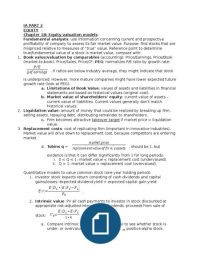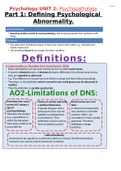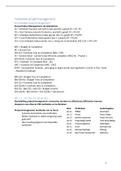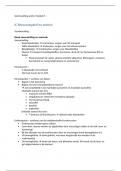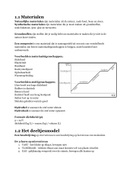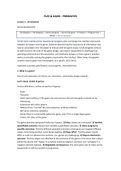EQUITY
Chapter 18: Equity valuation models:
Fundamental analysts: use information concerning current and prospective
profitability of company to assess its fair market value. Purpose: find stocks that are
mispriced relative to measures of “true” value. Reference point to determine
true/fundamental value of a stock is market value, compare with:
1. Book value/valuation by comparables (accounting): Price/Earnings, Price/Book
(market-to-book), Price/Sales, Price/CF, PEG: normalizes P/E ratio by growth rate:
P/ E
g of earnings . If ratios are below industry average, they might indicate that stock
is underpriced. However, more mature companies might have lower expected future
growth rate (look at PEG).
a. Limitations of Book Value: values of assets and liabilities in financial
statements are based on historical values (original cost).
b. Market value of shareholders’ equity: current value of assets –
current value of liabilities. Current values generally don’t match
historical values.
2. Liquidation value: amount of money that could be realized by breaking up firm,
selling assets, repaying debt, distributing remainder to shareholders.
c. Firm becomes attractive takeover target if market price < liquidation
value.
3. Replacement costs: cost of replicating firm (important in innovative industries).
Market value will drive down to replacement cost, because competitors are entering
market.
market price
d. Tobins q = replacement value of fir m s assets , should be 1, but
'
evidence is that it can differ significantly from 1 for long periods.
i. 0 < Q < 1: market value < replacement cost (undervalued).
ii. Q > 1: market value > replacement cost (overvalued).
Quantitative models to value common stock (one year holding period):
1. Investor stock expects return consisting of cash dividends and capital
gains/losses: expected dividend yield + expected capital gain yield:
E ( D1 ) + [ E ( P1 )−P o ]
E ( r )= .
P0
2. Intrinsic value: PV all cash payments to investor in stock discounted at
appropriate risk-adjusted interest rate: dividends, proceeds from sale of
E ( D 1 ) + E ( P1 )
stock: V 0= .
1+ k
a. Compare intrinsic value with market value to see whether stock is
under- or overvalued. Undervalued stock positive-alpha stock.
, b. Market capitalization rate: market consensus value of required rate
of return.
i. Market equilibrium will reflect intrinsic value estimates of all
participants.
Three main methods to value a stock (main problem: get reliable predictions):
1. Dividend Discount Model:
a. Determine investment horizon:
i. Finite horizon similarity in pricing bonds:
D1 D2 D +P
V 0= + 2
+…+ H HH .
1+k (1+ k ) ( 1+k )
∞
Dt
ii. Infinite investor horizon: V o=∑
t =1 ( 1+k )t .
b. Predict future dividend payments (and future stock price).
i. Constant Dividend Growth Model (Gordon): instead of
predicting many future dividends reduce problem to estimating
g by making simplifying assumption: dividends grow
1
continuously with fixed rate g: D1=D0 × ( 1+ g ) :
D0 (1+ g )1 D 1
V 0= = (perpetuity), can also use growing
k−g k −g
[ ( )]
n
C 1+ g
annuity: 1− . Only valid if g < k. Stock price is
r−g 1+r
expected to grow at same rate as dividends if V 0=P0 .
a. New problem: get reliable estimates of k and g:
i. Give economic interpretation of each of the
parameters.
ii. Show that stock prices grow at rate g (divide
V1 by V 0 ).
b. Estimating Dividend Growth Rates: g=ROE × b .
i. b: plowback or retention percentage rate (1 –
dividend payout rate).
Earnings t+1 =Bookvalue t +1 × ROE
Earnings t+1 =( Bookvalue t + Retained Earningst ) × ROE
Earnings t+1 =( Bookvalue t + Bookvalue t × b× ROE ) × ROE


